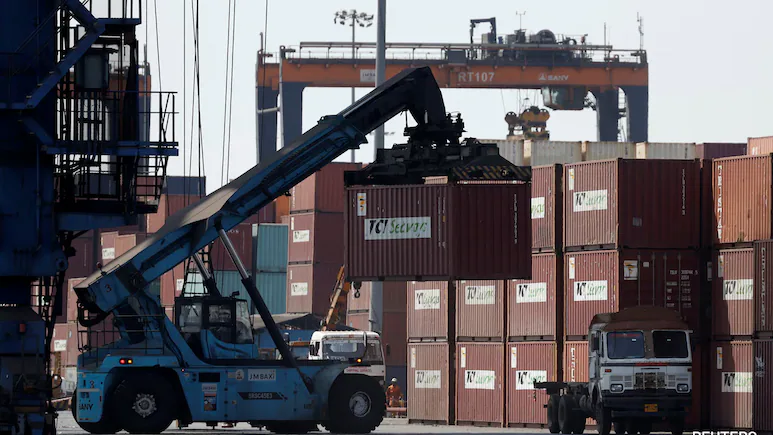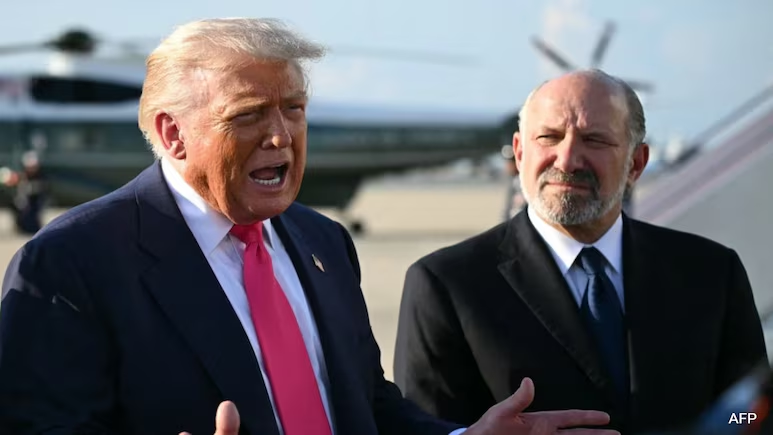Tariffs: Indian exports to the United States have been subjected to one of the severest trade sanctions in the post-war period- a levy of 50 per cent duty. Beginning at 9.31 am IST (12:01 EST) on Wednesday, two-thirds of Indian export to the US – valued more than 60 billion a year – is now in the tariff net. That is a doubling of the current rate of 25 per cent, which was notified earlier this month.
The catalyst, as per US president Donald Trump is that India continues to buy Russian crude and defence equipment. The Department of Homeland Security of the US stated that the rate will be levied on all Indian goods which have entered or been taken out of warehouses and in to consumption after this moment.
The government estimates incur tariffs of slightly lower impact of $48.2 billion at the export level. The new burden has been cited to be rendering shipment to the US commercially unviable causing job losses and slower economic growth.

Most Hampered Industries
Increase in tariffs could render the India products uncompetitive in the market, which could be beneficial to other countries like China and Vietnam, since the tariffs levied on India are higher unlike countries such as China (30 per cent), Vietnam (20 per cent), Indonesia (19 per cent) and Japan (15 per cent).
Shrimps: In FY2025, India supplied the US with shrimps valued at 2.4 billion and this constitutes 32.4 per cent of all its shrimp exports. The US remains the leading market of farmed shrimp and especially the peeled, deveined, cooked, and breaded shrimp.
Gems and Jewellery: Indian exports amounted to 10 billion to the US that constituted 40 percent of India exports to the world in the sector. Tariffs to be increased to 52.1 per cent, threatening to drop the number of jobs in Surat, Mumbai, and Jaipur where the industry has millions of employees cutting, polishing and manufacturing.
Textiles and Apparel: Exports of Textiles and apparels by India in FY 2025 to the US were recorded at 10.8 billion. Just apparels alone exported an amount of $5.4 billion to the US. The US has claimed a share of 35 per cent in Indian exports of apparel. Tariffs increase to 63.9 per cent compared with 13.9per cent, and any price benefit is removed. This will affect clusters in Tiruppur, Noida-Gurugram, Bengaluru, Ludhiana and Jaipur, with the use of Bangladesh, Vietnam, Mexico, and CAFTA-DR suppliers replacing those of Indian suppliers.
Carpets: India exports carpets to the US in FY 2025 in which Washington owns 58.6 per cent share in the Indian carpet exports. Tariffs are raised thrice, up to 52.9 percentage, putting under threat Bhadohi, Mirzapur and Srinagar artisanal lives, benefiting Turkey, Pakistan, Nepal and China.
Handicrafts: In FY 2025, India exported handicrafts to the US worth 1.6 billion, with a fourth of that share going to Washington. This threatens to shut down factories in Jodhpur, Jaipur, Moradabad and Saharanpur at the cost of Vietnam, China, Turkey and Mexico.

Leather and footwear: The exports of India in leather goods and footwear to the US are also reaching 1.2 billion dollars. It will now have to face full 50 per cent tariff disadvantage loosing to Vietnam, China, Indonesia, and Mexico threatening the Agra, Kanpur, and Tamil Nadu Ambur-Ranipet clusters.
Agriculture and Processed Food: Basmati rice, tea, spices and other farm products are exported by India totaling to $6 billion to the US. They will now face the entire 50 per cent duty and this position will allow Pakistan, Thailand, Vietnam, Kenya and Sri Lanka to replace the US demand.
Tariff-Exempt Products
Approximately, 30.2 per cent of India exports which amounts to $27.6 billion will remain duty-free in the US market. Some of the major product categories under this are pharmaceuticals and active pharmaceutical ingredients (APIs). They constitute 56 per cent of all exemptions of exports out of India.
In addition, electronics, such as smartphones, switching and routing equipment, integrated circuits, unmounted chips, and wafers used in making diode components as well as solid-state storage and RAM devices have also been excluded.
For more updates follow: Latest News on NEWZZY
